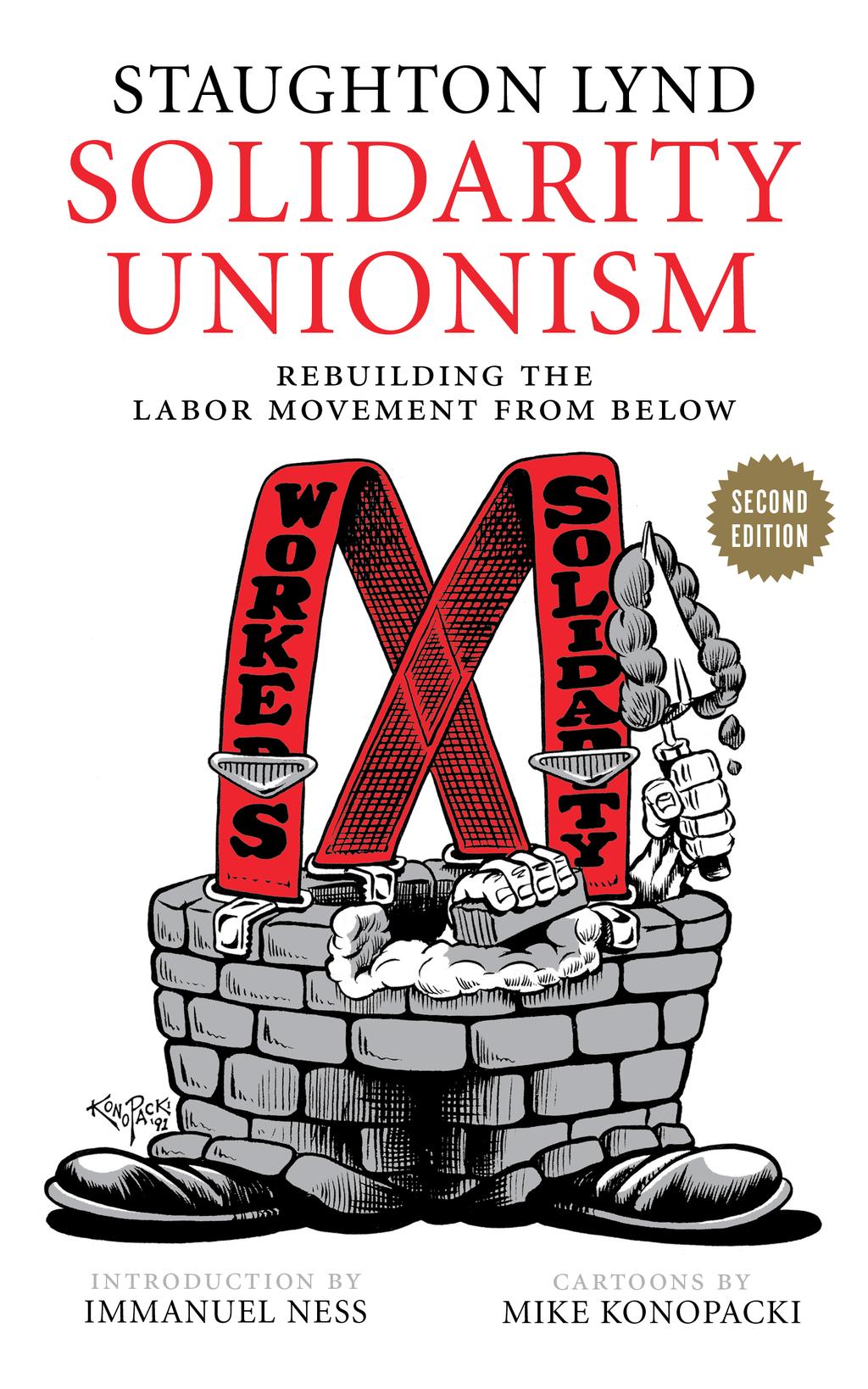In 1982, when service and maintenance workers at a hospital in Warren, Ohio went on strike, they were not alone. Members of the Workers’ Solidarity Club from Youngstown, Ohio — about 200 km away — joined the picket line. They made leaflets, invited members of other unions to join the hospital workers in rallies every week, and got themselves arrested while chanting “Warren is a union town, we won’t let you tear it down.”
The Workers’ Solidarity Club was not an established union but an alternative to one, created by workers displeased by the organizations meant to advocate on their behalf. It’s one among many “alternative kinds of organization, like the shopfloor committee and the parallel central labor union,” writes Staughton Lynd admiringly in Solidarity Unionism: Rebuilding the Labor Movement From Below.
Lynd describes the Workers’ Solidarity Club as initially being a forum where workers could get strike support and have discussions about the labour movement. It was created by workers and primarily composed of either them or retirees.
The club fostered an attitude of solidarity with all workers regardless of their union membership or even location. “Having lived through the way big corporations trampled on people’s lives in Youngstown,” writes the members, as quoted by Lynd, “we found it easy to relate to Native Americans in the Southwest, or to Nicaragua. In 1988 four members of the Club went to Nicaragua and worked there for two weeks. One of them, an electric lineman, returned with a fellow worker to help bring electric power to small towns in northern Nicaragua.”
The difference, argues Lynd, between the club and others like it on the one hand and existing trade unions is that membership in a parallel union is voluntary, dues aren’t deducted from paycheques, there are no staff members, and direct action is preferred over bargaining with management. But, most importantly, it comes from the bottom up. Rank-and-file workers organize and lead these organizations.
For Lynd, these parallel unions are especially necessary today. Lynd writes that the internationalization of capital has revealed the inability of centralized unions to respond to new challenges. We need solidarity across unions, industries, and even types of workers.
“[T]rade unions as they exist in United States are structurally incapable of changing the corporate economy, so that simply electing new officers to head these organizations will not solve our problems,” he writes. “[T]he time has come to break with the forms of organization of the existing labour movement…[W]hether we work within or outside existing structures, we must self-consciously seek the emergence of new forms.” And it looks like these new forms are attracting people.
While there’s been an incredible decline in union membership across the country, he reminds us that “there has also been a revival and more widespread exploration of the ‘solidarity unionism’ that is front and centre in these pages.”
In Canada, 70,000 temporary foreign workers were made undocumented based on the “four and four” law, where they can only work in the country for four years at a time and cannot return on another work permit for at least another four years. Many of these workers will either be deported, leave voluntarily, or remain in the country underground. But, in response, there’s been solidarity.
The Migrant Workers Alliance for Change has raised the issue and made demands like granting permanent residency to all workers upon arrival and ensuring that all workers have access to the same social services others enjoy — something which is not yet a reality for temporary migrant workers. The Canadian Labour Congress, and Unifor National, have agreed to take on this cause.
“For some time to come, the actions we may be able to take on behalf of a new kind of labour internationalism will be modest,” Lynd writes. “We are at an early stage of organizing when what we are really doing is meeting people, making friends, building community in a one-on-one manner.”
Perhaps the emerging connections between migrant workers brought in from all corners of the globe and Canada’s labour movement is our most crucial form of solidarity unionism now.
Click here for more information on May Day events happening near you!
Daniel Tseghay is a writer living in Vancouver.



